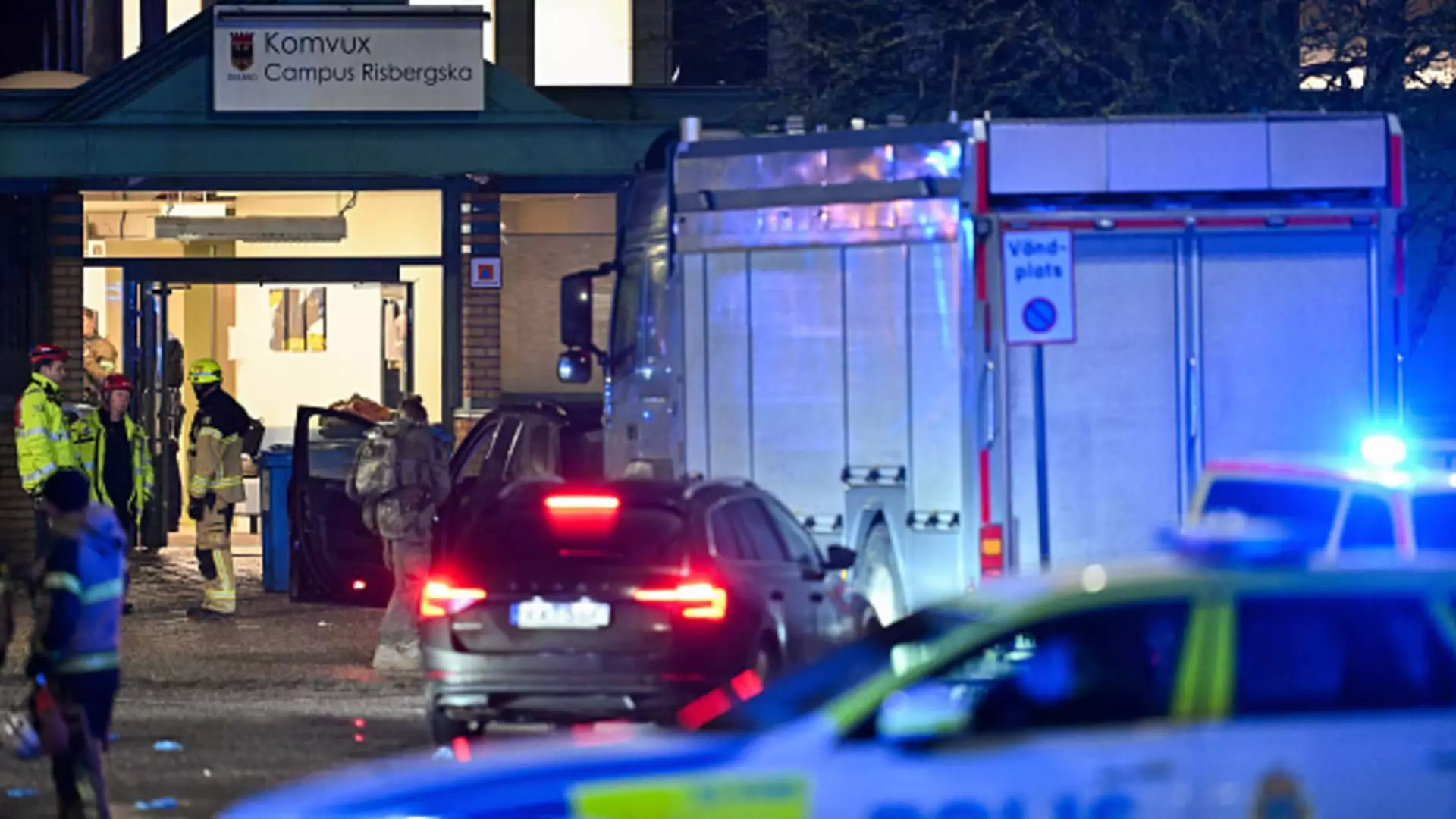On a tragic Tuesday, the landscape of Swedish society was irreversibly altered as a shooting incident at an adult education center left around ten individuals dead. This devastating event marked a historical high point of violence in Sweden, prompting reactions of disbelief and sorrow from various corners of the nation. Prime Minister Ulf Kristersson described the day as “painful” and emblematic of a burgeoning crisis, expressing collective grief in the aftermath of an incident that has shaken the foundations of a nation typically known for its safety and stability.
The local police reported that the suspected gunman may have also been among the deceased, a fact that initially complicated existing assessments of the incident. “We know that 10 or so people have been killed here today,” stated local police chief Roberto Eid Forest during a press conference. His unsettling observations underscored the severe implications of the incident, as the police initiated investigations to ascertain the full scope of this harrowing tragedy.
While police speculated that the gunman acted alone, details surrounding his motives remained unclear. According to Forest, the suspected assailant had not been previously known to law enforcement, raising questions about the warning signs that typically accompany such violent outbreaks. “We have a big crime scene; we have to complete the searches we are conducting in the school,” he said, highlighting the extensive work required to investigate the incident thoroughly.
The investigation, which now encompasses various elements, including murder and aggravated weapons offenses, seeks to compile a comprehensive profile of the perpetrator while also interviewing witnesses. In the broader context, the tragedy emerges against a backdrop of rising gang violence in Sweden, where shootings and bombings have become distressingly routine. This incident poses an urgent need for community conversations about the root causes of such crimes.
Prime Minister Kristersson condemned the incident as the worst mass shooting in the nation’s history. His emotional response was mirrored by an array of condolences pouring in from various public figures, including King Carl XVI Gustaf, who expressed his family’s deep sadness over the loss. International voices also chimed in, as European Commission President Ursula von der Leyen extended her sympathy to Sweden during this dark moment, signaling solidarity among European nations.
The comments from these leaders indicate a broader recognition of the implications of the tragedy not only for Sweden but for other nations grappling with similar issues of gun violence. The collective grief expresses a stark reality: violence can pierce even the most socially stable countries.
Amidst the chaos, testimonies from individuals within the Risbergska school for adults reveal a harrowing scene. Maria Pegado, a teacher at the institution, recounted the panic that erupted when a gunman stormed into her classroom. “I took all my 15 students out into the hallway, and we started running,” she recalled, depicting the frantic moments that preceded the gunfire. Her experience underscores the fear and chaos that have become all too common in educational institutions embroiled in violence.
As Pegado observed people being dragged from the scene, the severity of the situation crystallized. Like many others, she was faced with an immediate instinct to protect her students, aware that their lives hung in the balance. The incident has prompted urgent questions about safety measures in schools, particularly in institutions that serve diverse populations, including immigrants seeking a better future.
Although the frequency of school shootings is relatively low in Sweden, compared to other nations, the frequency of gang-related violence has been rising sharply. The country has grappled with a disturbing trend of gang activities leading to shootings and bombings, but fatal incidents in schools are statistically rare, highlighting this recent tragedy’s exceptional nature.
Sweden boasts a high level of gun ownership, largely attributed to hunting activities. Nonetheless, the repugnant reality of illegal firearms amid escalating gang-related violence has raised alarms about public safety and crime prevention measures. Moving forward, the importance of reviewing policies surrounding gun ownership and crime prevention cannot be overstated, as Sweden confronts an evolving landscape of violence.
As the nation comes to terms with this gloomy reality, many will hope for a renewed focus on community resilience and societal support, ensuring that the lives lost are not in vain. Ultimately, the aftermath of such violence demands a profound reflection on values, safety, and communal responsibility.

Leave a Reply